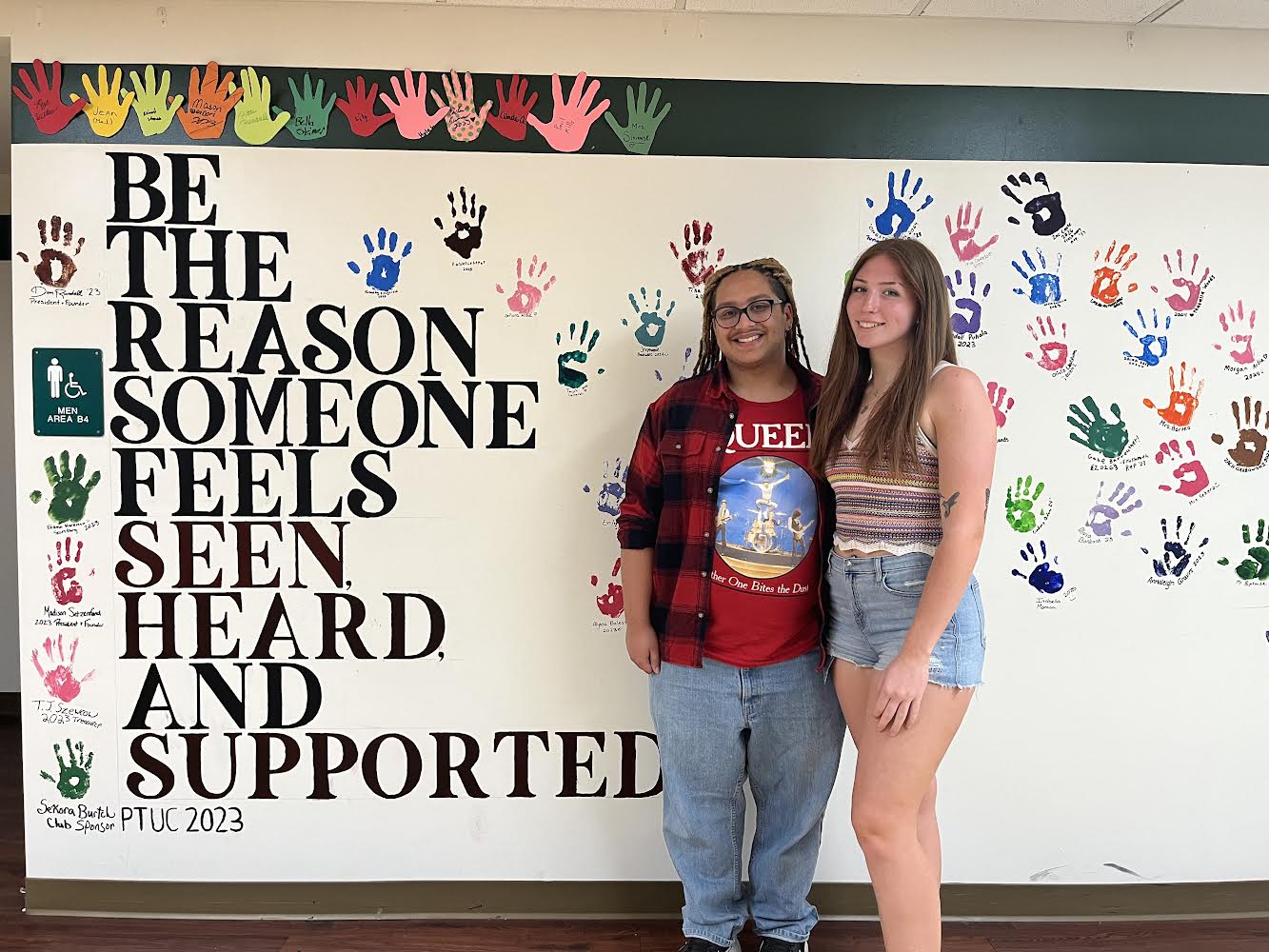As educators, we often have opportunities to make a change, big or small, to help our students have a stronger sense of belonging in our classrooms and buildings. These moments, when they present themselves, can sometimes feel risky for us to engage in while at other times, we don’t have a moment of hesitation. Perhaps we overhear a student conversation that we know would make others uncomfortable, so we take the opportunity to step in and correct their misconceptions. Or maybe we notice a student who appears lonely–a student who is always drawing–so we introduce them to the art club and help them connect with other creative students. Or we might have a student of color step into our office, near tears, sharing about the numerous microaggressions she experienced–just that day. And now we have a choice to make.
This is what happened at Penn-Trafford High School in the spring of 2022. A student went to see Dr. Amy Horvat, the assistant principal, out of frustration with the way she was being treated by her peers. This student shared with Dr. Horvat, “you don’t know how many times this happens in a school day.” Dr. Horvat’s response was one of empathy: “Well, I think I need to know how often this happens in a school day.”
In addition to this student’s experience, there were a few other incidents that occurred in the school; mostly issues around racism. So the administration had to choose whether to do something to ensure all students felt safe and that they belonged, or ignore it and hope it went away. We know that issues regarding racism are difficult to tackle, so the Penn-Trafford administration showed courage in their approach. They facilitated a meeting between the administration, community leaders, and students. Dr. Horvat described the meeting, explaining that they asked the students to come forward and share their experiences: “We just let them talk. They told us some stories that shocked everybody in the room. … [The students] didn’t feel safe here and [we] wanted to combat that.”
Following the meeting three things became clear:
- Students needed a safe space to talk about their experiences.
- Teachers were not exactly sure how to handle “difficult conversations.”
- They all wanted positive actions moving forward.
First, the administration reached out to Dr. Christine Herring. Dr. Herring “knew exactly how to approach” the educator needs by facilitating small group discussions with teachers in each building. Dr. Horvat explained that “the perception is that when you are a white school, you don’t have problems with racism because you don’t have diversity, but that is not the truth”; those problems still exist but students of color feel “isolated.” Dr. Herring helped Dr. Horvat to “pinpoint the problem” and outline a direction forward. The extremely positive experience with Dr. Herring has led to further professional development in the district around creating a sense of belonging in classrooms.
Second, the administration decided it was important to honor their students and allow them to take the lead in some of this work. Two students who had been a part of the meeting renewed a club they had previously created, the Unified Coalition (UC). The purpose of the UC is to create a safe space for students, build relationships with teachers, and build student unity. To achieve these goals, the UC leaders–Dominic Randall and Madison Setzenfand–facilitated weekly meetings among students, held monthly gatherings with teachers, and engaged with other student groups on campus. The teacher involvement has been an impactful aspect of the UC because teachers have been able to “voice their opinions and also hear about things students are dealing with, which helps build empathy and understanding when things happen in the classroom.” Other students who have joined the group have said that they feel “seen and heard.” Additionally, the UC has engaged with other student organizations–they organized a “Dine Around the World” food truck rally and joined with after school groups in their events. The group’s long term goals are to organize more of these activities with a wider variety of the student body to build unity among the entire school and help each student find their “people.”
The Unified Coalition at Penn-Trafford High School shows us how important it is for school leaders to listen to our students, engage in difficult conversations with them, and encourage them to take the lead in creating a more unified school environment. Sometimes this work can be difficult and bring up issues that we would simply rather not address, but, as Dr. Horvat shared: “The bottom line is that, if you are in this job and don’t care that there are kids here who feel like they would rather be anywhere else, then you are in the wrong profession.”

Dominic Randall (left) and Madison Setzenfand (right) were the student leaders who were instrumental in creating the Unified Coalition at Penn-Trafford High School.






